The old metropolis "St. Sophia" in Nessebar - the heart of the Old Town, its bright symbol and testimony to the early Christian and Byzantine heritage
- Stefan Ivanov

- Oct 5
- 17 min read
The ancient town of Nessebar, located on a rocky peninsula on the Black Sea coast, is a settlement with a deep history that spans over three millennia of continuous settlement.

Its development began as a Thracian settlement, known as Menebria, before being transformed into a Greek colony – Mesembria, which occurred in the 6th century BC.
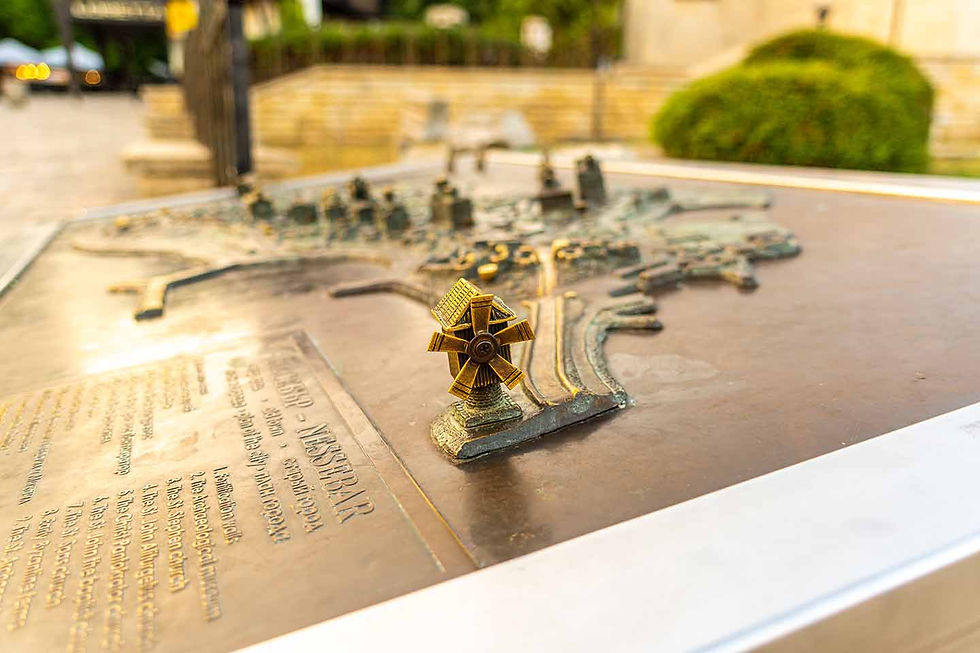
The city subsequently flourished as an important port under Roman rule and established itself as an episcopal, and later metropolitan, center within the Byzantine Empire.

This multi-layered evolution underlines its enduring importance in the region.

The rich and multi-layered heritage of Nessebar is tangibly reflected in its diverse architecture, which includes ancient fortifications, Hellenistic structures, Roman remains and a remarkable concentration of relatively well-preserved medieval churches - cultural monuments.

The city represents a unique example of a synthesis of centuries-old human activities in the field of culture, where numerous civilizations have left their material traces in a homogeneous whole, harmoniously inscribed in the unique natural environment.
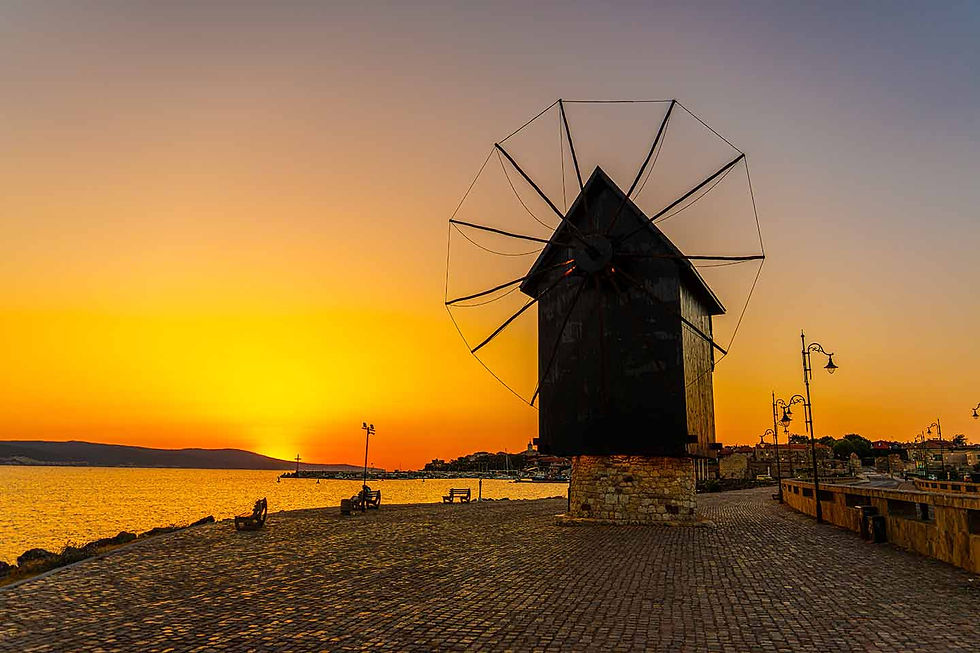
Ancient town of Nessebar – a cultural monument of national importance and UNESCO site status
Recognizing this outstanding universal value, the Ancient City of Nessebar was officially inscribed on the UNESCO World Heritage List at the 7th regular session of the World Heritage Committee, held in Florence, Italy, on 5 and 6 December 1983.
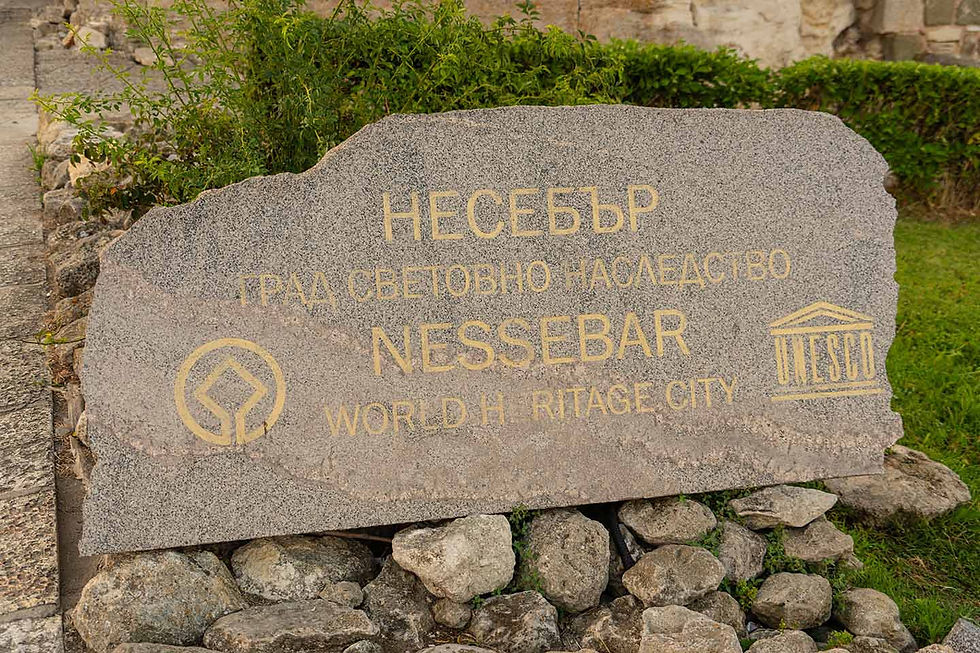
This important recognition underscores Nessebar's role as an exceptional testament to a multi-layered cultural and historical heritage that has served as a remarkable spiritual hotbed of Christian culture for thousands of years.

The territory of the ancient town of Nessebar was declared a museum, tourist and resort complex, an Architectural, Urban Planning and Archaeological Reserve by Decree of the Council of Ministers No. 243 of July 18, 1956.

The territory of the ancient town of Nessebar was declared an architectural and historical reserve and a tourist site by Ordinance No. 8 of the Council of Ministers and the Bulgarian Antiquities Authority, promulgated in the State Gazette No. 9 of 1981.

The ancient town of Nessebar was declared an Archaeological Reserve and a Historical Settlement - an architectural, construction and urban NCC by Order No. RD9R-14 of June 5, 2015 of the Council of Ministers, promulgated in the State Gazette, issue 51 of 2015.
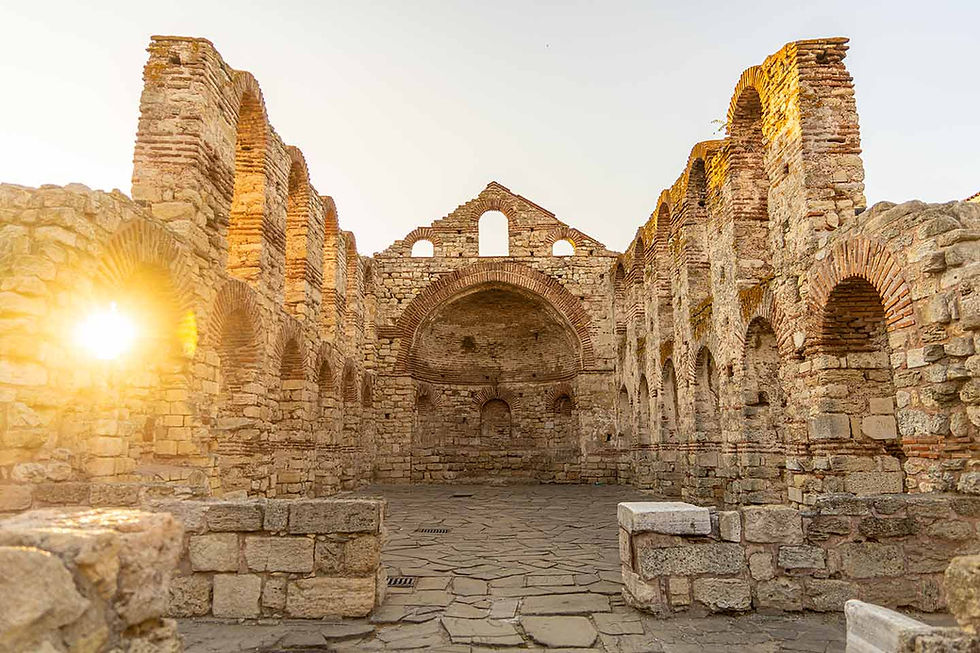
Church of St. Sophia
Among the impressive collection of historical churches in Nessebar, the church of "St. Sophia", widely known and called the "Old Metropolis", stands out as one of the most significant and well-preserved cultural monuments.

Its roots date back to the late 5th or early 6th century. It is assumed that it was built immediately after the Fourth Ecumenical Council, known as the Council of Chalcedon - a council of 630 God-bearing fathers in Chalcedon* in 451, when the Thracian diocese passed under the jurisdiction of the Patriarch of Constantinople, Anatoly.
*Chalcedon is a city in Asia Minor, on the shores of the Dardanelles.

The name "Old Metropolis" is not simply descriptive, but serves to distinguish this basilica from later church structures, in particular the Church of St. Stephen, which is sometimes called the "New Metropolis".

This term emphasizes the founding and enduring role of "St. Sophia" as the cathedral of the metropolitan diocese of Nessebar for centuries.

As one of the oldest and most important monuments, the "Old Metropolis" is a prime material representation of the multi-layered heritage of Nessebar, especially its Early Christian and Byzantine phases.

Its existence and preservation within a UNESCO site underscores its universal value, which transcends its original religious function to represent today a significant chapter in the development of human culture.

It is a key part of the city's continuous historical fabric, testifying to its role as a remarkable spiritual hotbed of Christian culture.

From early basilica to metropolitan cathedral – chronology of construction and major transformations
The construction of the Basilica of Saint Sophia is dated to the end of the 5th or beginning of the 6th century.

This period coincides with the heyday of the Byzantine Empire and the establishment of Christianity as the dominant faith in Nessebar, which at that time was already an episcopal center.
The church underwent a significant and transformative reconstruction in the early 9th century, when it acquired the architectural appearance that is largely visible today.

A key aspect of this reconstruction was the replacement of the original marble colonnades that separated the naves with more massive masonry ones.
This change in materials may reflect both a change in available resources and an evolution in architectural preferences or a need for greater structural stability after a period of instability or damage.

The multiple construction phases of the church, from its initial construction to its major reconstruction in the 9th century, are directly related to the dynamic geopolitical history of Nessebar.
The city often passed between the control of the Byzantine Empire and the nascent Bulgarian state.
The city's first incorporation into the Bulgarian state occurred in 812 under the rule of Khan Krum, an event that preceded or coincided with the major reconstruction of the church in the 9th century.

This shows that periods of political transition or consolidation of power have often stimulated significant architectural investment, reflecting the priorities and resources of the new rulers.

The change from marble to masonry may have been dictated by purely practical considerations, such as the availability of local building materials, or it may have been part of a broader Byzantine architectural trend towards more durable and cost-effective structures. These architectural changes are a tangible record of the city's changing fortunes.
The church's role as the cathedral of the Nessebar Metropolitan Diocese
Throughout the medieval period, Hagia Sophia was of paramount importance as the main cathedral church of the metropolitan diocese, whose ecclesiastical center was firmly established in Nessebar. This central role positioned it as the spiritual and administrative heart of the Christian community in the city, influencing religious life and cultural development.

Furthermore, the basilica was not an isolated structure, but an integral part of a larger church complex, functioning as the official residence of the Metropolitan of Nessebar.
Historical context and significant events
The history of Nessebar is characterized by frequent and turbulent changes in geopolitical control, alternating between the Byzantine Empire and the emerging Bulgarian state. Despite these periods of conflict and shifting alliances, Nessebar consistently maintained its strategic importance as a vital trading port and enduring episcopal center.

A notable historical episode in the church's long history was its plundering by Giacomo Doro's Venetian fleet in 1257, during which a number of valuable relics were taken to the church of San Salvatore in Venice. This event underscores the considerable wealth and spiritual importance of the church, making it a valuable target during medieval conflicts.
It is noteworthy that the church continued to function as an active place of worship until the end of the 18th century. This longevity is particularly significant considering that Nessebar fell under Ottoman rule in 1453.

Its continued existence, despite official Muslim rule, demonstrates the resilience of Christian institutions and practices even under foreign rule. This shows that despite external political pressures and the subordinate position of the Christian population, religious and cultural life centered around the Old Metropolis continued for centuries. This resilience has allowed the church to serve as a vital pillar of local identity and a continuing spiritual hearth of Christian culture, preserving a distinctive legacy in a changing geopolitical landscape.

Further evidence of its continuing importance is the surviving inscription from the tombstone of Matthias Kantakouzenos Palaiologos, a prominent figure who was buried in Hagia Sophia in the late 14th or early 15th century. This epigraphic record highlights its continued role as a revered burial place for prominent figures in later medieval periods.

By the 18th century, after centuries of continuous use, the church was eventually abandoned, gradually becoming the archaeological ruin it is today.
Chronological evolution
End of the 5th - beginning of the 6th century - initial construction of the basilica, Nessebar becomes an episcopal center
Beginning of the 9th century - major reconstruction, acquires its current appearance; the original marble colonnades were replaced with masonry
Middle Ages – served as the cathedral of the metropolitan diocese and part of the metropolitan residence
1257 – plundered by the Venetian fleet of Giacomo Doro, relics were taken to the church of San Salvatore in Venice
Late 14th – early 15th century – burial of Matthias Kantakouzena – Palaeologus in the church
1453 – Nessebar falls under Ottoman rule
Until the end of the 18th century – continued to function as a church despite Ottoman rule
18th century – abandoned
1927 – declared a national monument
1964 – declared an architectural and construction monument of culture of national importance
1983 – included as a UNESCO World Heritage Site as part of the Old Town of Nessebar.
This timeline, which I have compiled and designed for you, offers a clear and structured overview of the evolution of the church, making its complex and multi-period history accessible to understanding. It consolidates the information gathered, highlighting key periods of construction, important uses, and notable historical events. For researchers and historians, it provides a quick and accurate reference for dating and historical context, and for the general public, it simplifies understanding of the church's long and dynamic past.
Architectural Splendor
The Church of St. Sophia is a typical example of early Christian and Byzantine church architecture in the region, characterized primarily as a three-aisled, vaulted basilica. This architectural form, common in late antiquity and the early Byzantine period, emphasizes the longitudinal axis leading to the altar.
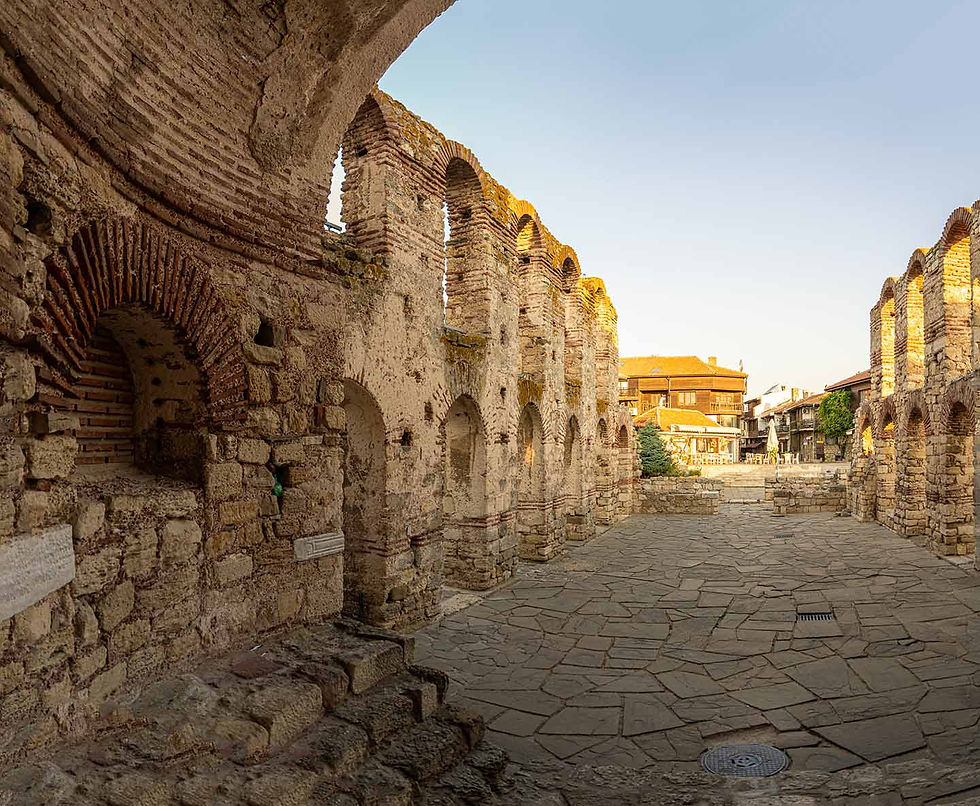
On its eastern side, the church features a semicircular apse, which is remarkably three-sided on the outside. This design choice adds subtle complexity to the exterior while preserving the traditional internal curve.

The structure is further defined by the presence of a narthex (entrance hall) and an atrium (courtyard). These elements were integral to early basilica design, facilitating processional entry, providing space for catechumens, and serving as transitional areas between the secular world and the sacred interior.

The internal division of the basilica into three separate naves is achieved by two rows, each containing five columns.
The side naves are separated from the central one by rectangular columns made of stone, which are then connected by brick arches.

A second arcade was placed above these arches, contributing to the verticality and structural integrity of the interior.
The central nave is notably wider than the lateral ones, at 9.3 meters wide, a common feature in basilicas, designed to emphasize the main axis leading to the altar and to provide the main liturgical space.

The consistent adherence to the three-nave basilica form, even through centuries of construction and reconstruction, emphasizes the lasting influence of early Christian and Byzantine architectural traditions in Nessebar. This positions the city as a significant regional center for this style.
The maintenance of this architectural typology, originating in the 5th–6th centuries and preserved through a major reconstruction in the 9th century, demonstrates a strong, continuous architectural line and a deep-rooted adherence to established ecclesiastical forms.

The large scale of the building further emphasizes its significance as a metropolitan church, designed to accommodate a significant congregation and perform metropolitan functions, thus reinforcing the historical significance of Nessebar as a major Christian center in the Byzantine world.
Specific dimensions and building materials
The church is of impressive dimensions, with an overall length of 25.5 meters and a width of 13 meters. This significant scale confirms its status as one of the largest and most significant surviving early churches in Nessebar, reflecting its metropolitan function.

Its construction was carried out mainly using mixed masonry, combining bricks and stones, a common and durable construction method in Byzantine architecture.
Original roof structure and window arrangement
The basilica originally had a gabled roof, a characteristic feature of early Christian basilicas. However, this original roof structure has not survived to this day, leaving the interior open to the sky and contributing to its current state of ruin.

On the east wall, strategically placed above the apse, there are three arched windows. These windows were intended to allow natural light into the sanctuary, illuminating the altar area and contributing to the spiritual atmosphere of the space.
Systematized key architectural features and dimensions of the Old Metropolitan Church of St. Sophia
Architectural style – three-aisled vaulted basilica
Overall length – 25.5 meters
Overall width – 13 meters
Width of the central nave – 9.3 meters
Apse – semicircular, three-walled from the outside
Nartex (entrance hall) – present
Atrium (inner courtyard) – present
Internal division – two rows of five columns; rectangular stone pillars connected by brick arches with a second arcade above
Original roof – gable (not preserved)
Windows – three arched windows on the east wall above the apse
Building materials – stone and brick.
These systematized key architectural features provide a concise and easy summary of the physical and structural characteristics of the church, making the complex architectural details easily understandable. The information thus collected, systematized and presented serves as a quick reference for researchers, architectural historians and students, allowing for a quick comparison with other Byzantine basilicas and a clear understanding of its specific features.
Artistic heritage – traces of frescoes, mosaics and inscriptions
The interior of the church of "Hagia Sophia" was once richly decorated, reflecting the deep spiritual devotion and high artistic standards characteristic of the Byzantine era. The interior walls of the basilica were originally elaborately plastered and later decorated with vibrant frescoes. These frescoes probably depicted biblical narratives, saints, and theological concepts, serving both didactic and prayerful purposes.

Adding to the grandeur, the entire floor of the basilica was covered with intricate mosaics, meticulously crafted from countless small, multi-colored pebbles. Such floor mosaics were a hallmark of Byzantine church art, creating a visually stunning and spiritually absorbing environment for worshippers, reflecting divine order and beauty.
Hear my prayer, O LORD, and let my cry come unto thee.
Hide not thy face from me in the day when I am in trouble; incline thine ear unto me: in the day when I call answer me speedily.
For my days are consumed like smoke, and my bones are burned as an hearth.
My heart is smitten, and withered like grass; so that I forget to eat my bread.
By reason of the voice of my groaning my bones cleave to my skin.
I am like a pelican of the wilderness: I am like an owl of the desert.
I watch, and am as a sparrow alone upon the house top.
Mine enemies reproach me all the day; and they that are mad against me are sworn against me.
For I have eaten ashes like bread, and mingled my drink with weeping.
Because of thine indignation and thy wrath: for thou hast lifted me up, and cast me down.
My days are like a shadow that declineth; and I am withered like grass.
But thou, O LORD, shall endure for ever; and thy remembrance unto all generations.
Thou shalt arise, and have mercy upon Zion: for the time to favour her, yea, the set time, is come.
For thy servants take pleasure in her stones, and favour the dust thereof.
So the heathen shall fear the name of the LORD, and all the kings of the earth thy glory.
When the LORD shall build up Zion, he shall appear in his glory.
He will regard the prayer of the destitute, and not despise their prayer.
This shall be written for the generation to come: and the people which shall be created shall praise the LORD.
For he hath looked down from the height of his sanctuary; from heaven did the LORD behold the earth;
To hear the groaning of the prisoner; to loose those that are appointed to death;
To declare the name of the LORD in Zion, and his praise in Jerusalem;
When the people are gathered together, and the kingdoms, to serve the LORD.
He weakened my strength in the way; he shortened my days.
I said, O my God, take me not away in the midst of my days: thy years are throughout all generations.
Of old hast thou laid the foundation of the earth: and the heavens are the work of thy hands.
They shall perish, but thou shalt endure: yea, all of them shall wax old like a garment; as a vesture shalt thou change them, and they shall be changed:
But thou art the same, and thy years shall have no end.
The children of thy servants shall continue, and their seed shall be established before thee.
Psalms, 102 chapter
On a built-in marble block, on which is carved a touching text from an Old Testament psalm, the fallen plaster has revealed to the eye and let my cry come unto thee.
Current condition
Despite its former splendor, the passage of centuries, combined with periods of abandonment and exposure to the elements, has caused significant damage to the artistic heritage of Hagia Sophia. Although the church was once richly decorated with mosaics and frescoes, only a small part of them has survived to this day. Unfortunately, much of the original artistic splendor has been irretrievably lost, and the remaining elements are fragmented and badly damaged.

This state of preservation is in sharp contrast to other prominent churches in Nessebar, such as the Church of St. Stephen, which has remarkably preserved extensive and well-preserved medieval frescoes, including 258 frescoes depicting over 1,000 figures from the New Testament, dating from the 16th to 18th centuries.
Significance of the surviving elements
Despite the significant loss of their original artistic program, all surviving fragments of frescoes or mosaics from Hagia Sophia are invaluable. They offer rare glimpses into early Byzantine art in the region, providing key insights into the decorative schemes and iconographic traditions of the great metropolitan churches of that era.

In addition to the pictorial and mosaic art, a significant surviving element is the preserved inscription from the tombstone of Matthias Kantakouzenos Palaiologos, dating from the late 14th or early 15th century. This epigraphic evidence provides a tangible and personal connection to the church's historical use as a revered burial place for prominent figures, offering direct historical documentation of its continued importance in the community over the centuries.
Current status and preservation – preserved ruin and cultural symbol
Today, Hagia Sophia stands primarily as an archaeological ruin, a testament to centuries of abandonment and exposure to the elements. Its original gabled roof has not survived, contributing to its open-air character.

Despite its dilapidated state, the Old Metropolitan Church remains one of the most recognizable and iconic symbols of Old Nessebar. It attracts thousands of tourists annually, serving as a major cultural landmark and focal point for visitors exploring the ancient city.
Integration as a UNESCO World Heritage Site
The Church of St. Sophia is an indispensable component of the architectural and historical reserve of the Old Town of Nessebar, which collectively holds the prestigious status of a UNESCO World Heritage Site. Its inclusion on this list highlights its universal historical, architectural and cultural significance, recognizing its contribution to world heritage.

The church itself was subsequently designated a cultural monument of national importance in 1964, further cementing its protected status under Bulgarian law.
Wider conservation efforts in Nessebar
Preservation efforts throughout Nessebar, which began as early as 1934 and intensified after the town was declared a reserve in 1956, are dedicated to preserving the town's unique, multi-layered cultural heritage.
The transformation of the "Old Metropolis" from a functioning church to an archaeological ruin and then to a symbol and tourist attraction within a UNESCO site reflects a broader shift in the way historic religious sites are valued and managed. They are moving from active places of worship to cultural heritage assets protected for their universal historical and architectural significance.

This trajectory is common for many ancient churches in the region, especially those that experienced periods of decline or Ottoman rule. It underscores the contemporary imperative for heritage preservation, and the conscious decision to preserve the church in its authentic character, rather than as a reconstructed version, underscores a contemporary conservation philosophy that values the integrity of historical layers.
The Enduring Significance of the Old Metropolitan Church
The Old Metropolitan Church of St. Sophia stands as a monumental testament to the deep historical and spiritual heritage of Nessebar. Its foundational roots establish it as one of the earliest and most significant Christian basilicas in the Balkans, crucial to understanding the early ecclesiastical development in the region and the spread of Christianity.

Architecturally, its well-preserved three-nave basilical form, complete with the characteristic semicircular apse, narthex and atrium, offers invaluable information on early Byzantine building techniques, spatial organization and design of the liturgical space.
Its considerable size further emphasizes its importance as a metropolitan cathedral. Historically, its continuous role as a metropolitan cathedral for centuries, experiencing numerous geopolitical changes between Byzantine and Bulgarian rule, and remarkably, functioning even under Ottoman rule until the end of the 18th century, emphasizes the resilience of Christian identity and institutions in Nessebar.

Although much of its original interior artistic decoration, including extensive frescoes and mosaics, has unfortunately been lost to time, the surviving fragments provide intriguing glimpses into its former splendor and contribute vital information to a broader understanding of Byzantine art and decorative programs in the Black Sea region.
As a key component of the UNESCO World Heritage Site of Old Nessebar, Hagia Sophia is not simply a static ruin, but a dynamic archaeological record. It continues to be the subject of scholarly research and a major attraction for thousands of visitors, embodying the tangible traces of multiple civilizations.

Its preservation as an authentic historical artifact, rather than a reconstructed building, is a conscious and principled choice, reflecting contemporary heritage conservation philosophies that prioritize the integrity of historical layers.
The Old Metropolitan Church of St. Sophia is a foundational monument not only to the Christian heritage of Nessebar, but also as an excellent example of early Byzantine ecclesiastical architecture in the Balkans. Its history, marked by continuous use, adaptation, and eventual preservation as a ruin, encapsulates the dynamic cultural and political narrative of the region. It serves as a powerful and enduring symbol of the city's continuous cultural and spiritual continuity, offering profound insights into the architectural, artistic, and religious history of the Balkans.

In 1927, the Old Metropolitan Church was declared a national monument.
In 1964, the Old Metropolitan Church was declared an architectural and construction monument of culture with the category of national importance.
Nessebar - a journey through time, embraced by the sea and whispering stories
Sometimes we need to stop for a moment, leave the hectic everyday life behind us and immerse ourselves in an atmosphere where time has stopped.

Ancient Nessebar is just such a place.

Situated on a small, rocky peninsula, connected to the mainland by a narrow strip of land, this city is like a treasure trove, protected by the waves of the Black Sea.

Nessebar is located:
412 kilometers (about 3 hours and 59 minutes by car) from the capital
277 kilometers (about 2 hours and 55 minutes by car) from the city of Plovdiv
100 kilometers (about 1 hour and 48 minutes by car) from the city of Varna
35 kilometers (about 36 minutes by car) from the city of Burgas
The ancient town of Nessebar is a living museum. Here, antiquity, every ruin, every paved street and every ancient house carry the spirit of bygone eras.

As soon as you pass the old mill, you will be greeted by a labyrinth of cobblestone streets that wind between old houses with characteristic wooden facades and flower gardens.

The air is filled with the scent of the sea and history.

Don't miss the over 40 churches that whisper stories of the greatness of Byzantium, and feel how history intertwines with the sea. Some of them are ruins, others are perfectly preserved, but all of them are witnesses to the greatness of the Byzantine Empire and the Middle Ages.

But Nessebar is not just a museum. It is a living city that breathes in unison with the sea. Allow yourself to get lost in the narrow streets, browse the small shops with handmade souvenirs and sit in a cozy restaurant with a view of the sea.

In the evening, when the sun sinks into the sea waters and the city lights reflect on the calm surface, Nessebar becomes a magical place that will leave a lasting impression in your heart.

Come and feel the magic of time in Ancient Nessebar!

Surrender to the charm of the wooden houses perched above the cliffs and let the wind tell you about the ancient seafarers.

In the evening, when the sun reflects in the sea, Nessebar turns into a magical place.

Visit Old Nessebar and touch eternity - here time simply stops.
How to get to the Old Metropolitan Church "St. Sophia"?
The Old Metropolitan Church "St. Sophia" is located in the center of the Old Town of Nessebar.
I advise you to leave your car in the large northern municipal parking lot (a parking fee is required). You climb some of the numerous steps leading to "Kraibrezhna" street and along one of the numerous narrow cobblestone streets you head to the heart of the Old Town of Nessebar.
You are reading an ad-free blog - completely focused on the content!
I remind you that you can read all my posts here - in "Photo Moments", without being interrupted by a single annoying ad, because "Photo Moments" is an ad-free place!
I made the important decision to make "Photo Moments" ad-free so that my site can load much faster, the content I present to you can be as clean as possible and your experience in "Photo Moments" can be the best possible!
If you appreciate everything I do, you can support me HERE or by following the gold star below.
Thank you!
And finally, my dear friends,
you shouldn't miss checking out
the special photo album with moments –
discovered, experienced, filmed and shared with you!



Comments